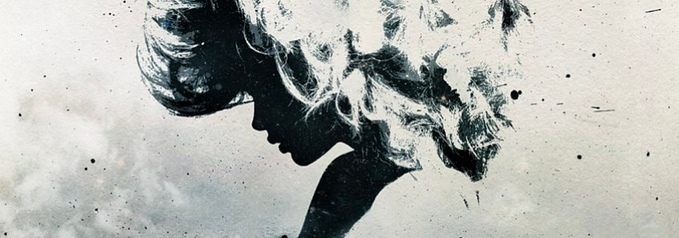Is Khadi Really Natural?
Khadi -The Way Of Life
Khadi is an integral part of India and is thelatest fashion trend. It is extremely intertwined with the history of our nation. It was Mahatma Gandhi who began promoting the spinning of Khadi in the 1920s in India for rural self –employment- instead of using cloth manufactured industrially by Britain.

Khadi was propagated not just as a fabric but as a way of life, that was centered around the village. The practice of khadi was meant to generate employment and income and was hence self-reliant. Thus making Khadi an integral part of the iconic Swadeshi movement. Khadi became a fabric that embodied a worldview of the past as well as the future; Khadi is a symbol of the Indian textile heritage and the handloom industry leading to being a symbol of India’s freedom struggle.
Adopting khadi as a lifestyle choice symbolized a move away from British textiles and products, and hence promoting all things Indian.

Indian Handloom Industry — Khadi Fabric
The word ‘Khadi’ is derived from ‘khaddar’, a term used for handspun fabric in India, Bangladesh and Pakistan. Khadi is a term used for fabrics that are hand-spun and handwoven, usually from cotton fiber. However, contrary to popular belief, khadi is also manufactured from silk and wool, known as khadi silk or woolen khadi respectively. The fabric is known for its rugged texture, comfortable feel and ability to keep people warm in winter while keeping them cool during the summer, making it an extremely sustainable fabric.
India was one of the few countries that usedKhadi as a fabric to achieve freedom, and it’s this very reason that seven decades later khadi continues to inspire and amaze people in India and around the globe.

Khadi is broadly manufactured in two steps: converting the fiber into yarn using tools like the spinning wheel (Chakra) and weaving the year into fabric using looms. Both spinning and weaving can be mechanized, resulting inhandloom industry fabric.
Post Indian independence, the government institutionalized the khadi industry and set up the Khadi and Village Industries Commission (KVIC) in 1957. This was aimed at providing employment through the production of saleable articles. Even till today the commission works towards supplying raw material and implements to producers promoting research in production and techniques.
It is only recently with the coming of sustainable fashion, that the fabric has caught the attention of high fashion. The fabric is known for its versatile character and comfort while it is also durable and affordable.

http://www.mesmora.com/fashion-accessories https://instagram.com/mesmora?igshid=17ftr89t3y9wePIN IT
Khadi In The New Era Of Fashion
Although in today’s age, unlike the traditional method of the hand-spun and the cloth hand-woven, a lot ofkhadi is not hand-spun any longer. The mechanized ambar charkha has replaced traditional hand-operated chakras across the country. A multitude of Indian and international designers are not taking up the idea of khadi from Sabyasachi Mukherjee to GoodEarth, every designer is using khadi as a tool to promote sustainable fashion. At the recently held LFW W/F’19, an entire day was dedicated to showcase the designers using khadi.

Over the years the range of fabric available has increased immensely. Printed and vegetable dyed variations are adding to the variety of garments in contemporary silhouettes along side the traditional Nehru jackets.
Khadi has moved from being used in only traditional wear to being used in Indo — western wear in recent times. It has also made khadi dresses gain popularity in the western countries and Europe spreading Khadi as the latest fashion trend.
Indian Fashion Designers And Khadi
When it comes to the Indian fashion industry, various designers are taking of khadi as one of the latest trends in fashion giving it a new spin. Khadi is also being used immensely to support the larger idea of sustainable fashion. Various designers have also re-invented the traditional fabric. From Akaro to 11:11, younger brands are extremely intertwined with the use of Khadi.
Fashion designer and entrepreneur Sanjay Garg, the founder of the prominent Raw Mango brand, works with traditional weavers across India. Garg is working with handcrafted chikankari embroidery on Bengal mulmul — a muslin variant from Murshidabad.

For Abraham &Thakore, sustainability is a big part of the creative story with an important focus for them is the use of handloom textiles as they have a smaller carbon footprint. Additionally they also recycle their materials.
Sabyasachi Mukherjee, is known for his opulent briald wear but he’s also a true follower when it comes to Khadi andhandloom. The designer uses rich ethnic fabrics in his collection including an extensive use of Banarasi fabric. He also started a project called ‘Save The Saree’ where he retails handwoven Indian sarees on a non-profit basis priced at Rs.3500. The entire proceeds go to the weavers of Murshidabad.

Gaurav Jai GuptaPIN IT
Sustainable designers like Gaurav Jai Gupta has experimented with khadi and metal
Anavila focuses on her signature khadi saris, UjjawalDubey createskhadi jackets with sharp cuts and Ajay Kumar uses his digital prints on handloom fabrics that were developed throughout the country.
There’s no denying that the Indian deisgners are slowly choosing khadi as their preffered choice. A sustainable fabric which looks regal.
Why Choose Khadi?
Khadi fabric is cool, comfortable and environment friendly. The fabric allows for it to absorb perspiration better in humid conditions making it one of the best fabrics for summer months. Khadi is also more ‘fuller’ or more voluminous than mill fabrics, as it is hand woven. The average yarn diameter of hand-spun yarn is always more than that of mill-spun yarn which makeskhadi warm to wear in winters too.

http://www.mesmora.com/fashion-accessories https://instagram.com/mesmora?igshid=17ftr89t3y9wePIN IT
Since Khadi is spun and woven in the natural environment using natural fibers like cotton, silk and wool, it is 100 per cent natural. Natural dyes are also used in dyeing of Khadi fabric, which makes it a green fabric. Production of one meter Khadi consumes just three litres of water against 55 litre consumed in a conventional textile mill. The making ofKhadi is eco-friendly, since, it does not rely on electric units and the manufacturing processes do not generate toxic waste products.
From The IKF Desk
Khadi is no longer what it was when Mahatma Gandhi sat with a charkha and spun a philosophy around it. It has lived a life of its own and is a fabric that reflects the times.
Source: https://www.iknockfashion.com/is-khadi-really-natural/









